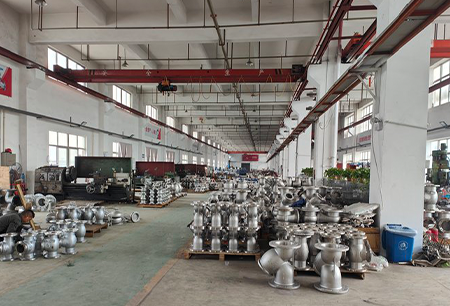Essential Guide to Pipe Fittings and Valves for Efficient Plumbing Solutions
Understanding Pipe Fitting Valves A Comprehensive Guide
In industrial and commercial plumbing systems, the importance of pipe fitting valves cannot be understated. These essential components play a pivotal role in regulating the flow of liquids and gases, ensuring safety, efficiency, and functionality in various applications. This article delves into the significance of pipe fitting valves, their types, functions, and the factors to consider when selecting the right valve for your system.
What Are Pipe Fitting Valves?
Pipe fitting valves are mechanical devices used to control, direct, or regulate the flow of fluids or gases within a piping system. They can be used to start or stop flow, adjust flow rates, or enable the diversion of flow from one pipe to another. Valves are a critical part of plumbing, heating, and irrigation systems, making them indispensable in both residential and industrial contexts.
Key Types of Pipe Fitting Valves
1. Gate Valves These are used primarily for on/off control. Gate valves allow for very little resistance to the flow when fully open and are characterized by their linear motion. They are ideal for applications where the valve is either fully on or fully off and not needed for throttling.
2. Globe Valves Unlike gate valves, globe valves are designed to allow for throttling and flow control. Their spherical body shape and movable disk provide excellent regulation of flow, making them suitable for applications that require fine adjustments.
3. Ball Valves Featuring a spherical disc that rotates to open or close the valve, ball valves are known for their durability and ability to provide a tight seal. They offer quick opening and closing action, making them ideal for applications requiring high flow rates and quick shut-off.
4. Check Valves These valves are designed to prevent backflow in a piping system. They operate automatically, enabling fluid to flow in one direction while blocking reverse flow, which is crucial for protecting pumps and maintaining system pressure.
5. Butterfly Valves These valves consist of a rotating disc that is positioned in the center of the pipe. They are lightweight and provide quick shut-off capabilities, making them popular in large pipelines where space is limited.
pipe fitting valve

6. Pressure Relief Valves Used to protect equipment from damage due to overpressure, these valves release excess pressure in a system. They are crucial in preventing potential explosions or leaks in high-pressure systems.
Factors to Consider When Choosing a Valve
Selecting the right pipe fitting valve for your application requires careful consideration of several factors
- Material Compatibility The valve must be compatible with the fluid or gas it will control. Common materials include stainless steel, brass, PVC, and cast iron, each with its own advantages depending on the nature of the fluid and environmental conditions.
- Pressure and Temperature Ratings It's essential to choose valves that can withstand the specific pressure and temperature conditions of your system. Each valve comes with its own rating, which should be matched with the system's operational demands.
- Flow Requirements Understanding the flow requirements of your system will help you select the appropriate valve type. Some applications may require valves that can handle high flow rates while others may need precision control.
- Operating Mechanism The ease of operation is also critical. Manual valves require physical effort, while automated valves can be controlled remotely, offering more convenience but potentially increasing costs.
- Maintenance Needs Some valves require more maintenance than others. Knowing the maintenance needs and accessibility of the valve can save time and costs in the long run.
Conclusion
Pipe fitting valves are integral to the efficient operation of many systems, from simple home plumbing to complex industrial processes. Understanding the different types of valves, their functions, and the factors to consider when selecting one is essential for ensuring the safe and efficient operation of your piping systems. Whether you are a professional plumber or a DIY enthusiast, investing time in understanding these components will result in better performance, enhanced safety, and reduced maintenance costs in the long run.
-
The Versatility of Ball Valves in Fluid Control SystemsNewsJun.10,2025
-
The Practical Benefits of Centerline Butterfly ValvesNewsJun.10,2025
-
The Benefits of Bellows Seal Globe Valves for Industrial SystemsNewsJun.10,2025
-
The Advantages of Offset Butterfly ValvesNewsJun.10,2025
-
Ductile Gate Valves: Strong, Reliable, and Essential for Every SystemNewsJun.10,2025
-
Cast Iron Gate Valves: A Reliable Solution for Every SystemNewsJun.10,2025
-
Why Choose a Brass Gate Valve for Superior Performance and DurabilityNewsMay.09,2025




